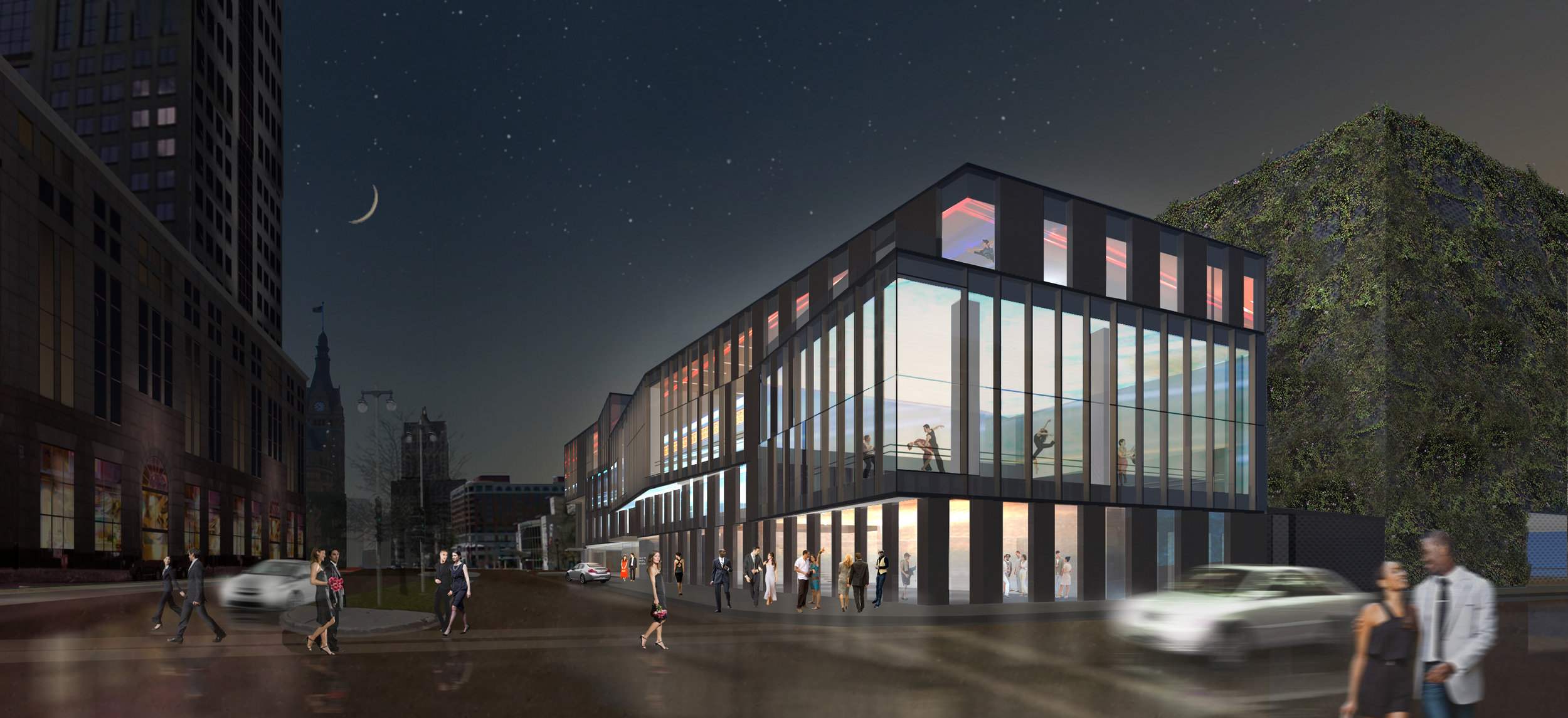

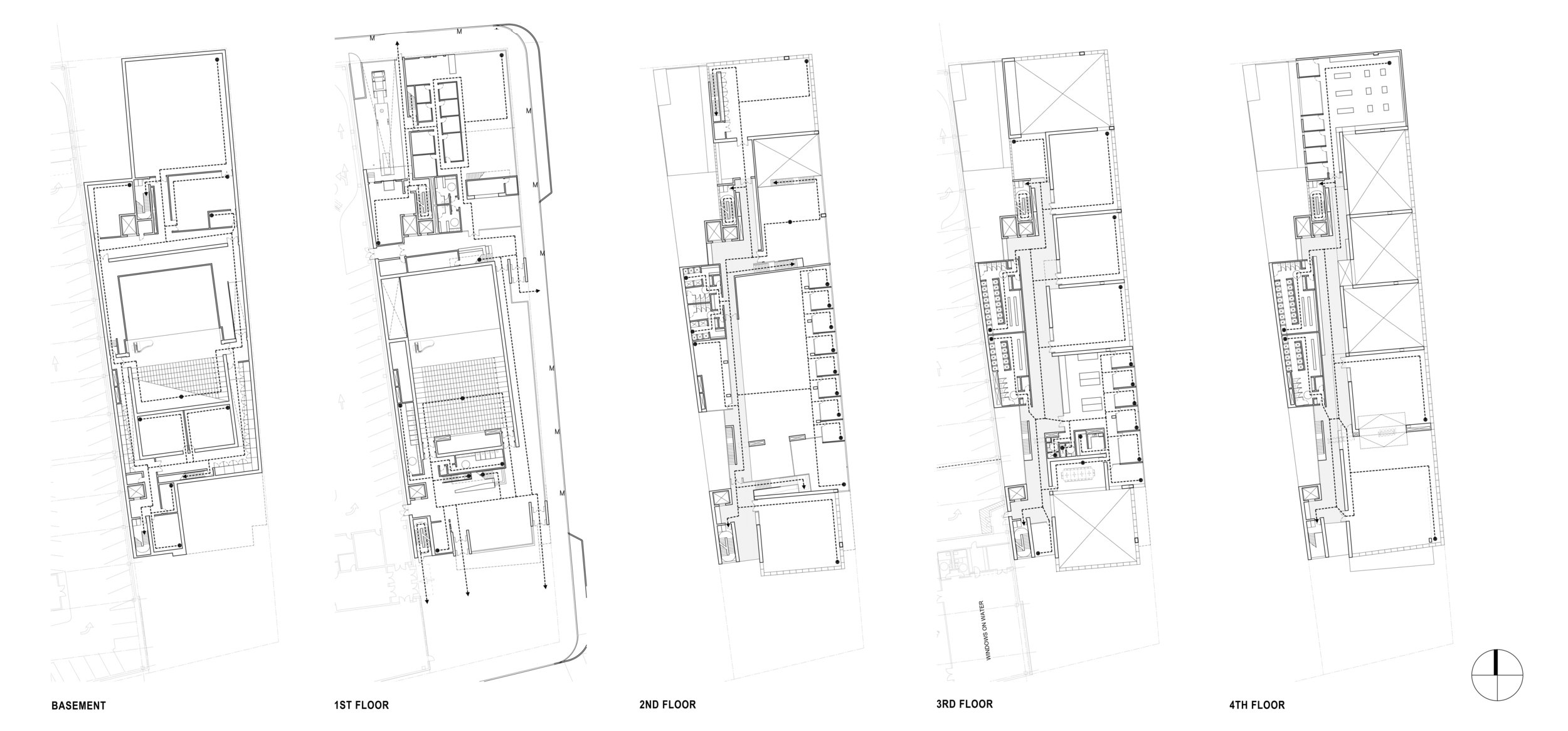
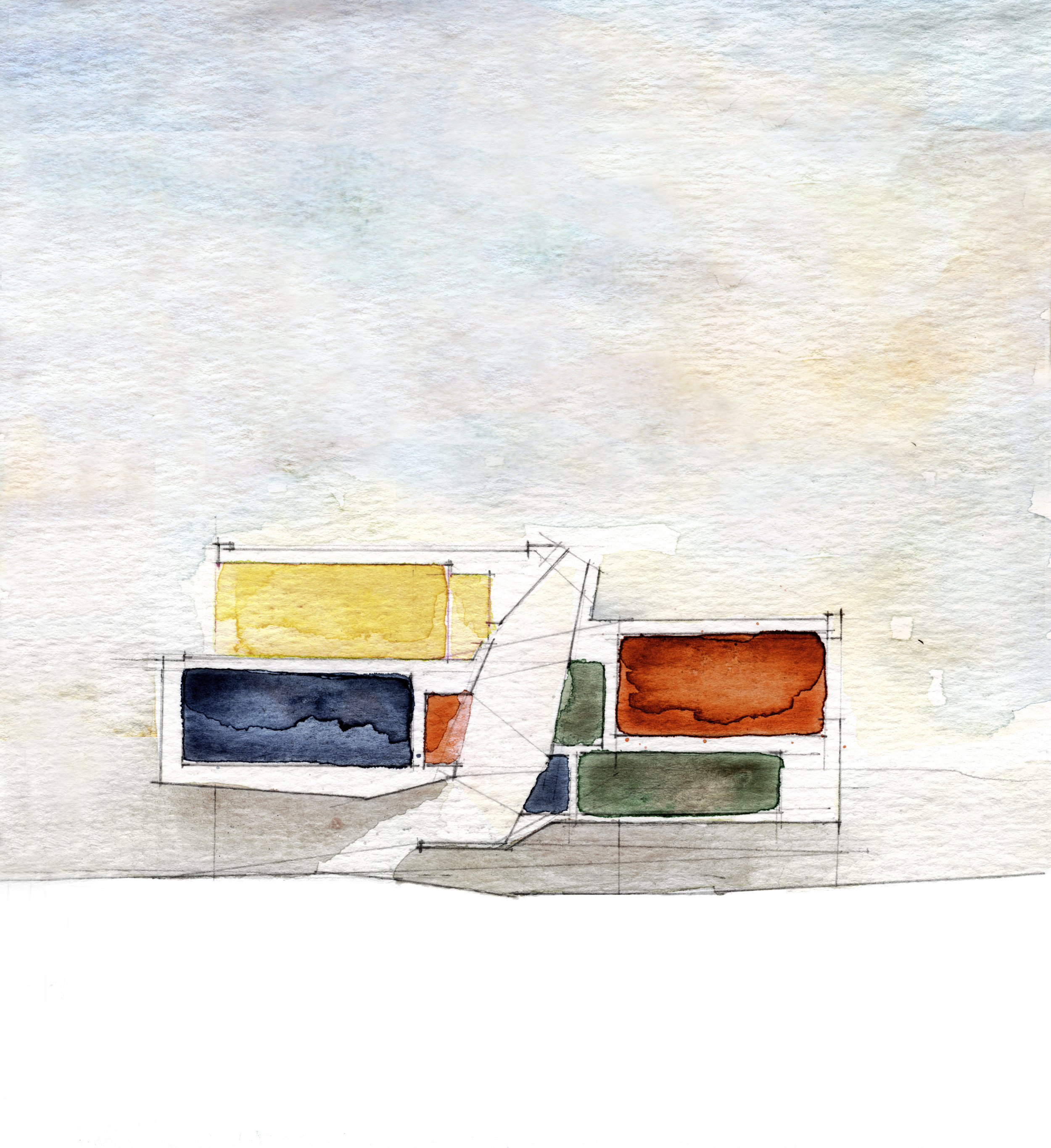
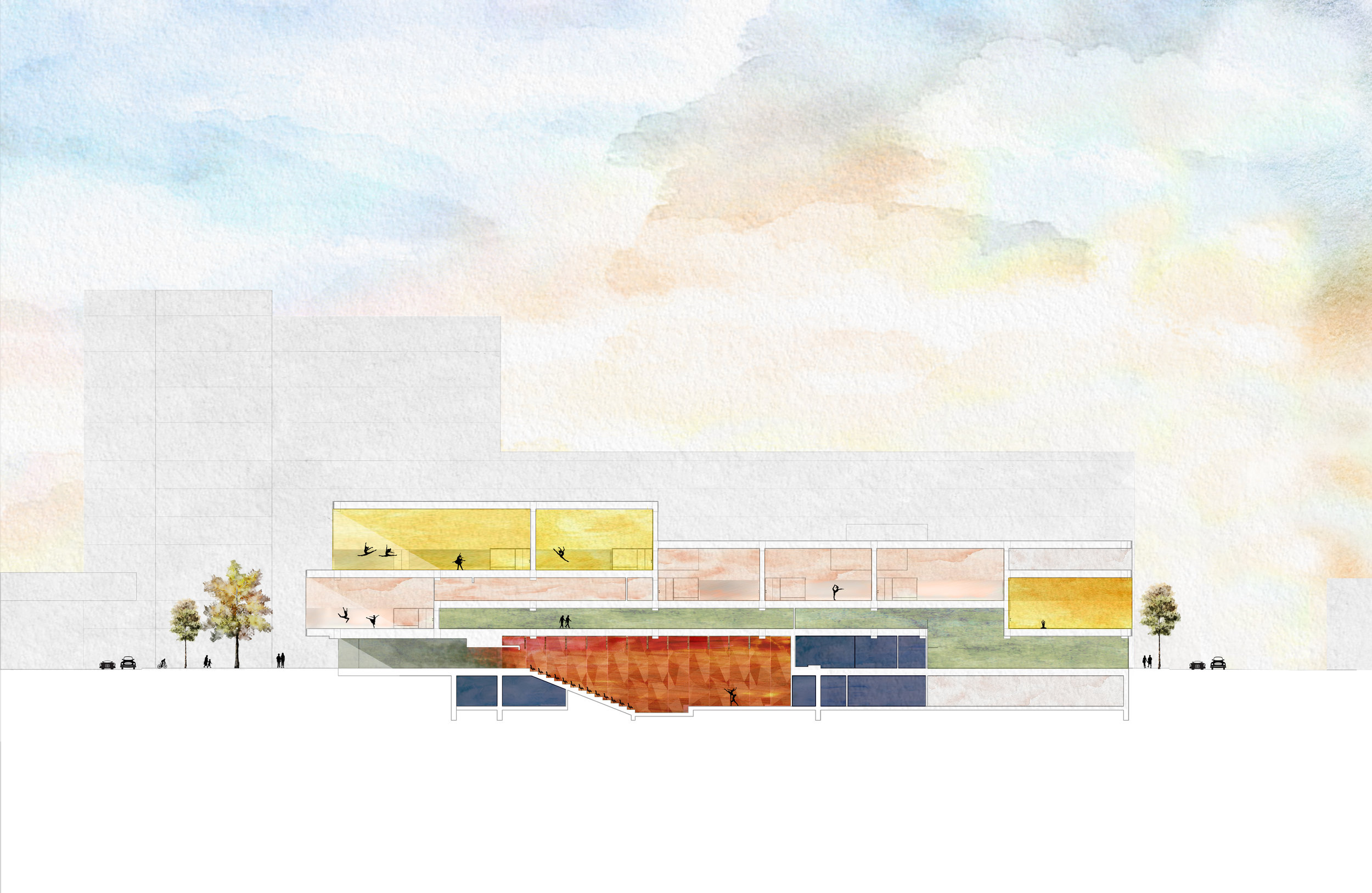
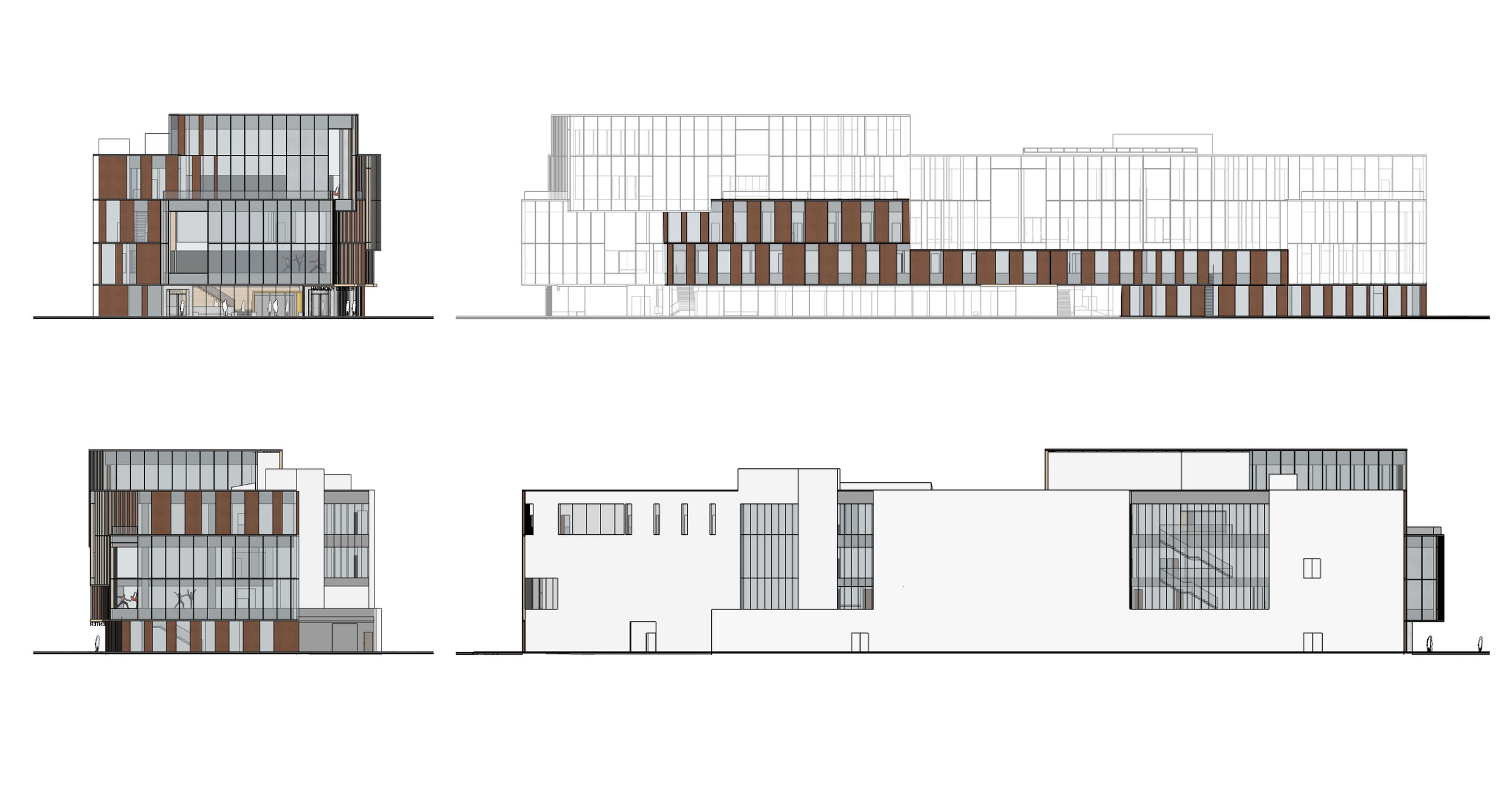

DANCE CENTER
MILWAUKEE, WI
To be certain, many buildings can house an institution of culture, but the burden of architecture is to describe that institution. Situated adjacent to Chicago architect Harry Weese’s brutalist Marcus Center for the Performing Arts (1968), the architecture of the Midwest Center for Art in Movement (MiCAM) departs from stalwart institutional iconography with a vision of greater civic engagement. Where the impassive façade of the Weese building shrouds its institution in monolithic cladding, the MiCAM’s punctuated surface opens the Milwaukee Ballet’s Professional Dance Company and Ballet School to a new, collaborative chapter with the city’s central business district. Opening a window onto its fascinating back-of-house operation, the MiCAM interrogates ballet’s perceived cultural exclusivity, and proposes a vision that is integrated with everyday life.
To facilitate this interaction, the MiCAM’s systematic oscillation of mass and aperture establish porosity between the building and the city. Glass and precast panels interweave transparency and opacity, veiling and unveiling the program’s rehearsal spaces and support functions as if behind a curtain. The main theater space anchors the building to its site, reserving public spaces for civic program at the ground floor. To enhance this effect, the faceted massing extends the dynamism of the urban avenue onto the building’s skin, pressurizing the wrapper to reflect and contain movement. By amplifying the interface between worlds, the MiCAM engages new resonances between the ballet and the city, gathering a series of interactive programs including a dance school, yoga studio, costume shop, performance space, and gallery. The MiCAM depicts the Milwaukee Ballet with greater transparency to reveal the diverse culture it represents, a vibrant picture for its future engagement with the city.
AWARDS + RECOGNITIONS
Recipient of Our Town Grant, National Endowment of the Arts